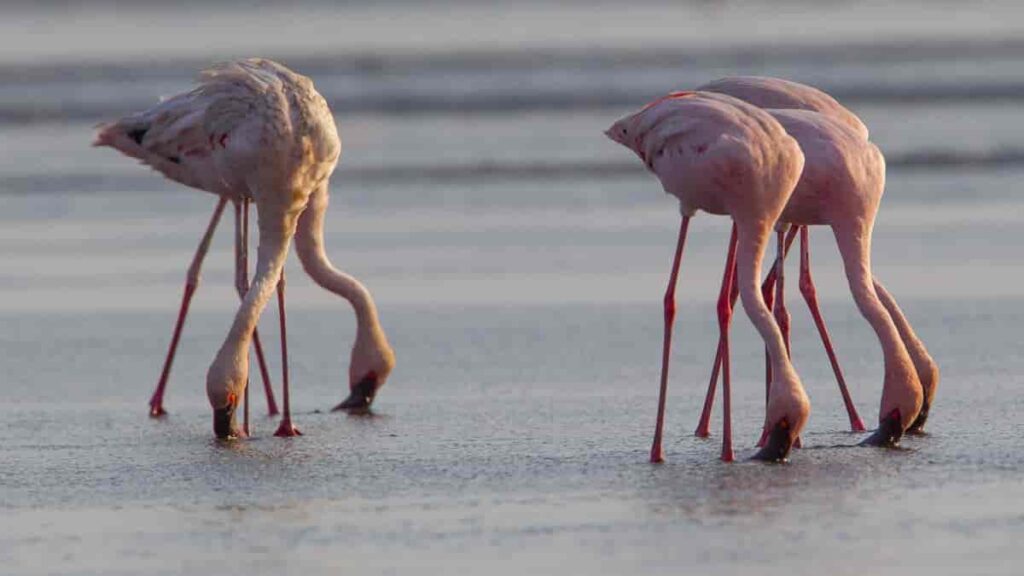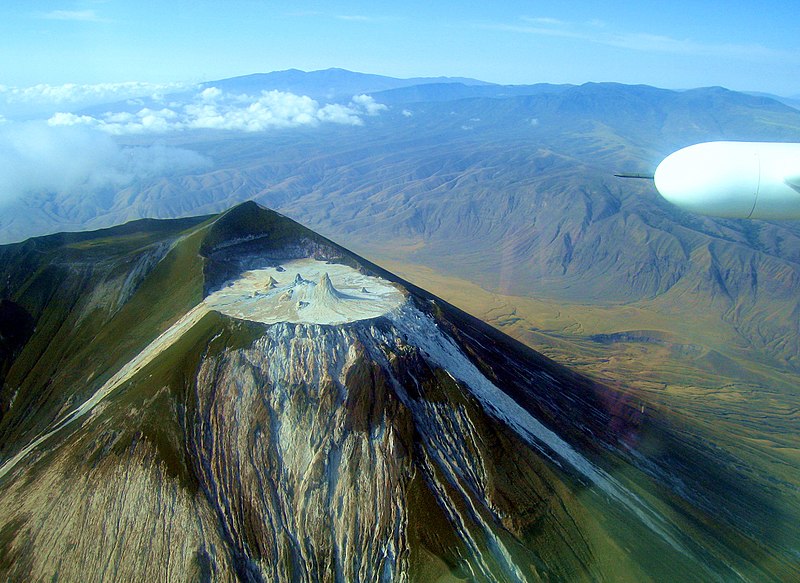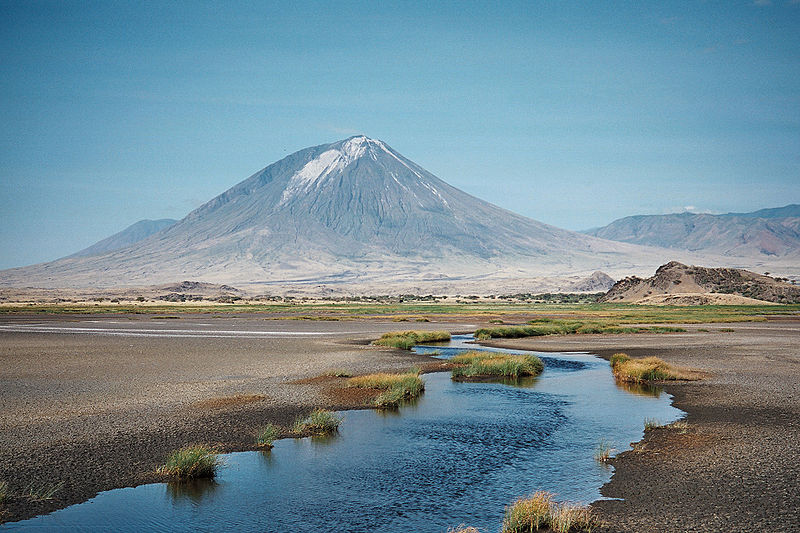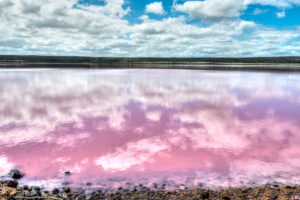Lake Natron is an alkaline lake on the floor of the Rift Valley located in the northern parts of Tanzania along the border with Kenya. It is a relatively small lake but in recent years, it has gained quite a reputation for its uniqueness.

More than 90% of the surface area of Lake Natron is Located in Northern Tanzania with the rest of it lying in Kenya. The lake covers an area of 1040 square kilometers according to a report by the United States Geological Survey. There are scarce life forms in and around the lake, however, the lake has proven to be an ideal habitat for flamingos which thrive throughout the year.
A small group of the Maasai community inhabit the catchment area along with areas around the lake. There are numerous issues facing the conservation and preservation of the lake but, there have been several drives to increase awareness and roll back recorded effects.
The lake is surrounded by active volcanoes and it has a surface elevation of 600m (2000ft). During the wet season, Lake Natron can be upto 3m deep but it would require a really extended dry season to reduce the depth to less than 2m deep.
As a traveler in Africa, especially to the region where Lake Natron is found, there are several things you have to know.
What happens if you swim in Lake Natron?
Lake Natron’s water is highly alkaline and saline, its temperatures could actually be as high 60 degrees celsius which provide perfect conditions for the growth of algae blooms as well as various types of bacteria.
Swimming in Lake Natron won’t cause any immediate effect on your skin, it may actually feel like swimming in a jacuzzi. However, your eyes as well as areas where you may have any open wound on your skin will begin to sting. If you swallow the water, you will experience nausea, diarrhea and severe dehydration.
In extreme cases, the temperature of the lake’s water will cause third degree burns in just a few seconds and will also cause chemical burns in your gastrointestinal system as a result of the contamination in the water. You may also experience a burning sensation on your eyes which will result in blurred vision.
Understanding the causes behind the effects of swimming in Lake Natron is very important for all travelers to that area. Read on and understand each cause in great detail;
Why can flamingos survive Lake Natron?
Lake Natron has the highest population of the lesser flamingo whose numbers have been on a steady decline in other lakes especially in The Rift Valley. Flamingos are unique birds and despite mostly staying in the same area, they recently migrated from Lake Baringo to Lake Natron.

Flamingos are well adapted to the conditions of Lake Natron. They feed on the algae growing at the bottom of the lake, this algae actually causes the pigmentation of their plumage. Their legs are covered with scales as well as a tough skin, both of which resist the corrosive action of the water. Special glands in their heads remove excessive salt making it safe for them to drink the water.
Lake Natron is an undeniably harsh environment, without similar special adaptations, animals cannot survive in this area. This has proven to be a major advantage to flamingoes since it provides the perfect breeding ground by keeping off its predators.
Why is Lake Natron so toxic?
Lake Natron is located close to Ol doinyo Lengai, an active volcano which erupts regularly. The magma that flows from this active volcano is rich in sodium and potassium carbonate and drains into the lake basin. This material is known as natrocarbonatite in the scientific community and more commonly referred to as natron for which the lake is actually named after.



Being completely surrounded by higher points, the lake’s water does not have anywhere to drain to and as water evaporates from the lake basin, the concentration of the carbonates increases due to the salts left behind. This contributes to the lake’s salinity and alkalinity over time reaching an average pH of 10.5. For reference, ammonia has a pH of 11.6 whereas 7 is the neutral pH.
This high concentration of salts as well as a high pH provide the perfect conditions for algae to grow to toxic levels. The still water of Lake Natron also enables the culturing of bacteria known as cyanobacteria which gives the lake its characteristic reddish color. All these factors contribute to making Lake Natron extremely toxic.
How to survive Lake Natron
You may find yourself traveling within the region where Lake Natron is found by plane, by road or even on a boat on the actual lake. Whatever the circumstances, having the right information on how to safely carry out your activities will be essential. In 2007, a documentary film crew found themselves in quite a predicament when their helicopter crashed into the lake while they were filming.
Thankfully, cameraman Ben Herbertson and his fellow crew members, which also included producer Jeff Sibbery as well as five passengers, were able to survive the tragic helicopter crash.
Here are a few things you can try and do to survive Lake Natron in case you find yourself in a similar situation:
- Before you go on the Safari, look for a guide who is familiar with the area. Especially one from the Maasai community who live near the lake.
- Always pack a small first aid kit; this is just a good practice when traveling in Africa especially to areas which are sparsely populated.
- The mobile phone services are pretty decent in most parts of Africa but since this area is so far out of the way, it would be a good idea to have a satellite phone just in case.
- Try and avoid direct skin contact with the water and in the event this is not possible, try and avoid getting the lake’s water into your mouth, eyes, ears etc.
- Do not take any unnecessary risks. This might be difficult especially if you love the thrill of adventure but prevention is always the best course of action.
- Seek professional medical attention immediately you get to any urban area.

